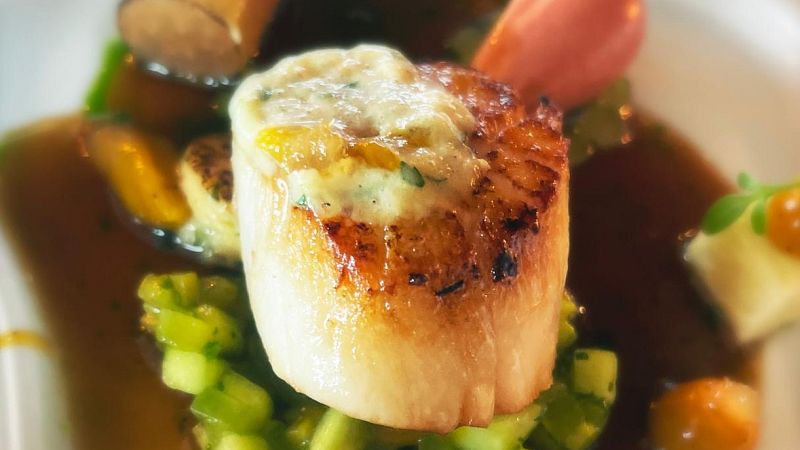
A Culinary Journey Through Tallinn
Tallinn, the capital of Estonia, is a city that blends history with modernity. Its old town, a UNESCO-protected area, is home to numerous restaurants that serve what they describe as authentic or traditional cuisine. From dishes like Ahjus Küpsetatud Karuliha (stewed bear) to Külmroog (Baltic herring) and Sea Suitsuvorst (smoked pork sausage), Estonian cuisine reflects a rich tapestry of influences and adaptations. These dishes showcase the complexity of Estonian gastronomy, shaped by centuries of cultural exchange.
The Influence of Neighboring Cultures
The presence of bear dishes in Estonian cuisine can be traced back to the traditions of northern forestlands shared by Russia, Finland, and Sweden. Similarly, the pickled or cured Baltic herring reflects Scandinavian preservation techniques that were adopted during the Hanseatic League's era of trade. Meanwhile, the smoked pork sausage has clear Germanic roots, highlighting the diverse culinary influences that have shaped Estonia over time.
While the old town caters well to tourists, those seeking a more unique experience should head to the sea. The former industrial harbor area of Noblessner has transformed into a gastronomic hub over the past decade. Originally named after Emanuel Nobel and Arthur Lessner, who founded a submarine factory in 1912, this area now houses several innovative restaurants. Some remnants of its industrial past, such as wartime ephemera, still remain, adding character to the space.
Sustainability and Innovation
Lore Bistro, located in Noblessner, exemplifies a shift towards sustainable dining. Co-founder Kristjan Peäske recalls starting with a farm-to-table approach, which was taken very seriously. However, the limited availability of local ingredients in Tallinn's climate made it challenging to maintain creativity. After a decade of this approach, Peäske felt the need for change. The pandemic provided an unexpected opportunity when a former sous chef returned to Tallinn, bringing with her Hiroaki Takeda, a fermentation expert from Copenhagen's Noma.
This collaboration led to a new philosophy at Lore Bistro: maintaining a focus on local ingredients while embracing global influences. Peäske explains that while sustainability remains important, the emphasis has shifted towards creating an enjoyable dining experience for both chefs and guests. This evolution mirrors the broader changes in Estonian cuisine, where historical elements are reimagined through contemporary lenses.
Traditional Elements and Modern Interpretations
Black bread holds a special place in Estonian culture, often regarded as sacred. Kama, a mix of grains, was historically used to provide essential nutrients. Fish and meat were reserved for celebrations, but German influence introduced staples like pork and sauerkraut. At Lore Bistro, these traditional elements are reinterpreted in modern dishes. For example, the goat cheese cream with pickled grapes and caramelized walnuts offers a fresh take on local flavors.
Another dish, trout roe with charred potato, draws inspiration from the Slavic "Kasukas" or fur coat. While the original dish featured layers of beetroot, egg, and herring, Lore Bistro's version uses trout roe and mustard seeds for added depth. This fusion of tradition and innovation highlights the evolving nature of Estonian cuisine.
Environmental Responsibility and Global Influences
Estonia's grasslands, protected by the EU, support cattle farming that has a positive carbon impact. Peäske emphasizes the importance of sourcing locally to minimize environmental harm. In contrast, other chefs like Matthias Diether at 180° prioritize quality over local sourcing. Diether believes in using the best products, regardless of origin, while still appreciating the quality of local vegetables, fruits, and dairy.
Diether's restaurant, 180°, showcases a completely different approach to fine dining. His philosophy revolves around simplicity and precision, with each course featuring only three ingredients. This stark contrast to the previous philosophy highlights the diversity of approaches within Estonian gastronomy.
A Taste of Modern Estonian Cuisine
At 180°, the menu features dishes that blend global influences with local ingredients. The sturgeon and potato borscht, for instance, combines traditional Eastern European flavors with modern techniques. The mimolette cheesecake with liquid nitrogen chives and crème fraîche pearls demonstrates the chef's ability to elevate comfort food with sophistication.
The main room of 180° offers a stunning view of the Baltic Sea, enhancing the dining experience. Each course is carefully crafted, with attention to detail and flavor balance. The pairing of wine with dishes like the Normandy scallops with kimchi ice cream and dashi jus exemplifies the restaurant's commitment to excellence.
Challenges and Resilience
Despite the challenges posed by the cost of living crisis and the lingering effects of the pandemic, fine dining in Tallinn continues to thrive. Diether acknowledges the difficulties faced by the hospitality industry but remains optimistic about its future. He believes that fine dining will always endure, even in the face of adversity.
In conclusion, Tallinn's culinary scene is a vibrant reflection of its history, culture, and innovation. From traditional dishes to modern interpretations, the city offers a diverse range of experiences for food lovers. Whether you're savoring a simple meal or indulging in a multi-course tasting menu, the flavors of Estonia are sure to leave a lasting impression.


Posting Komentar